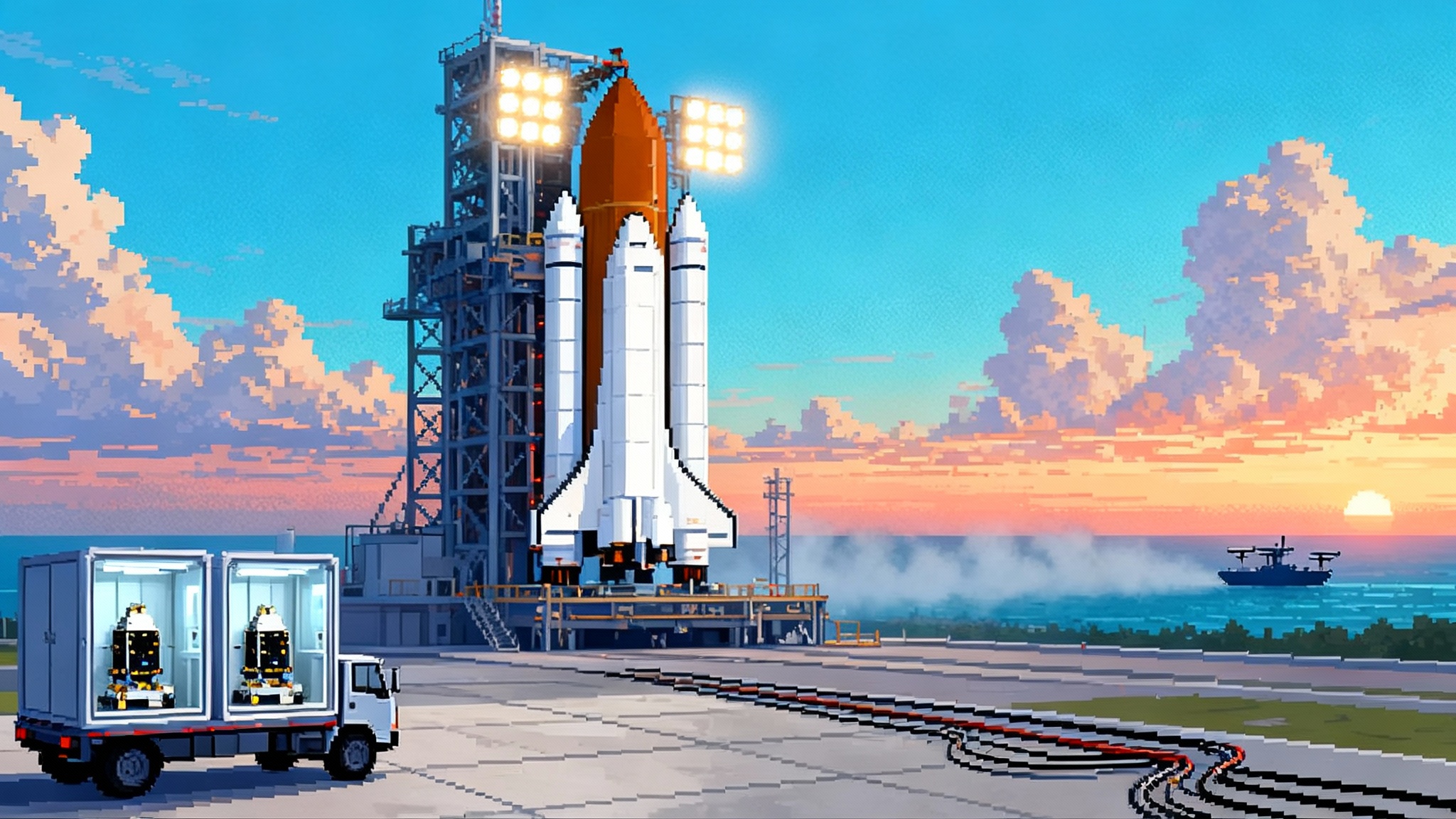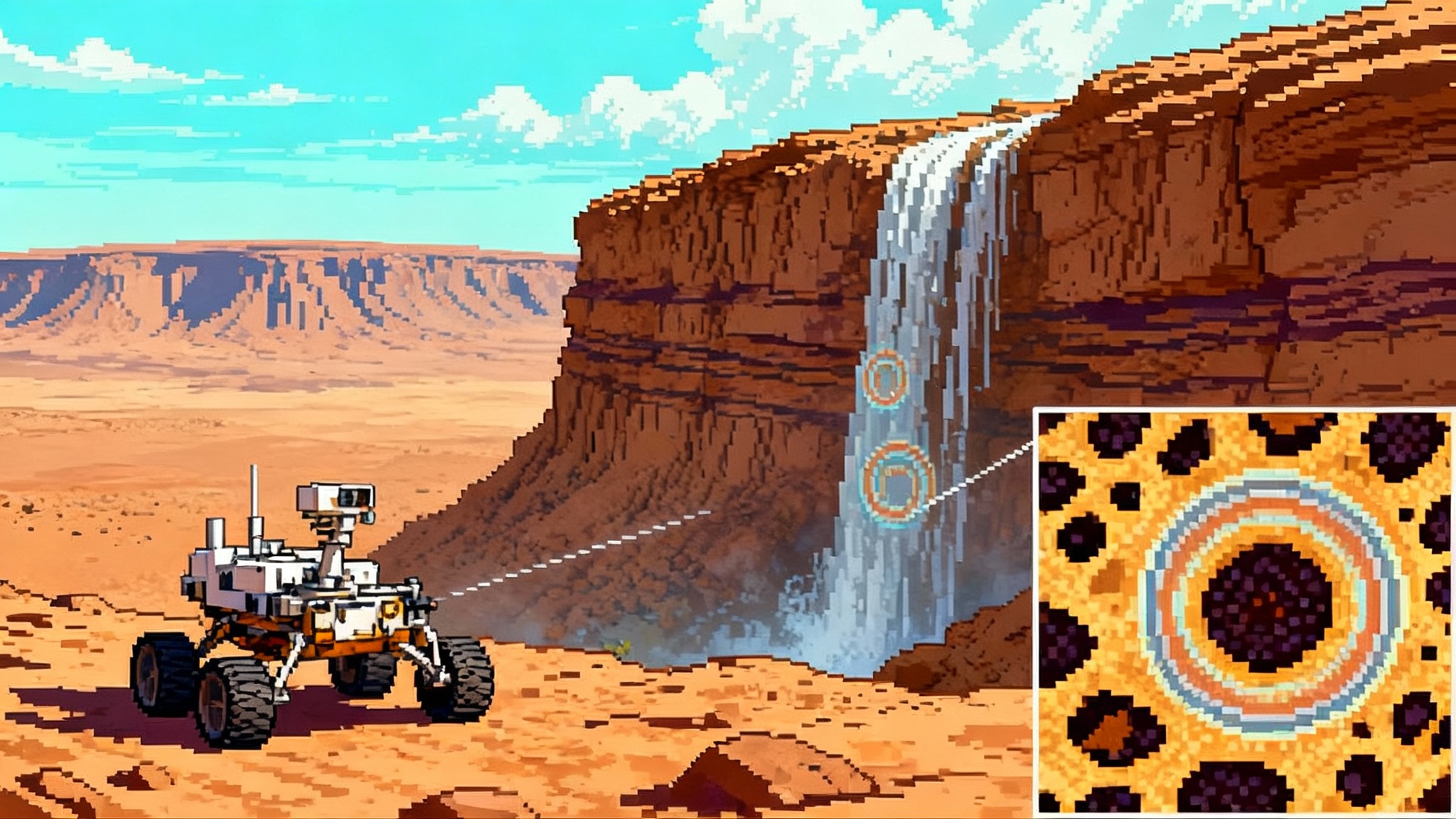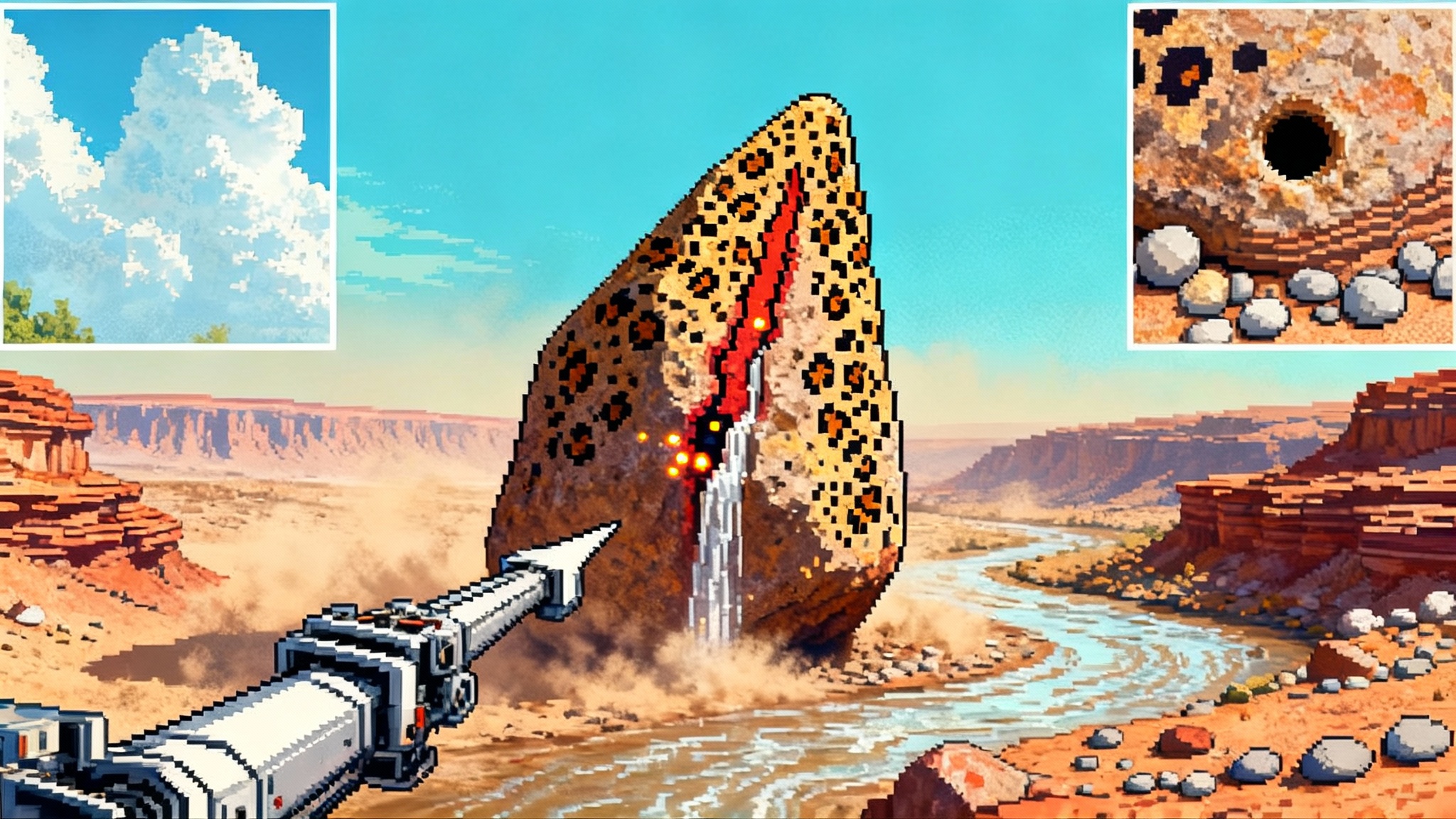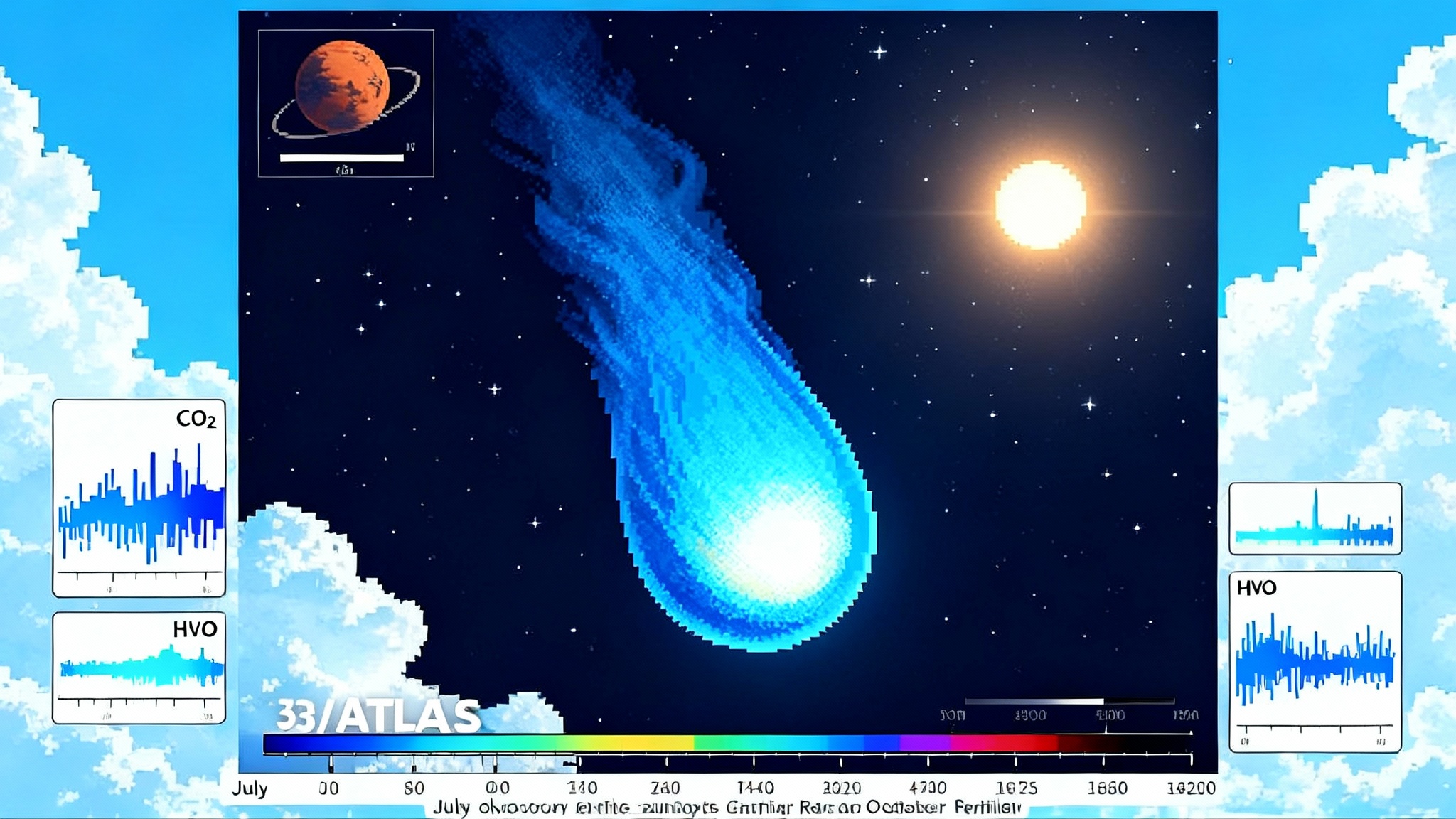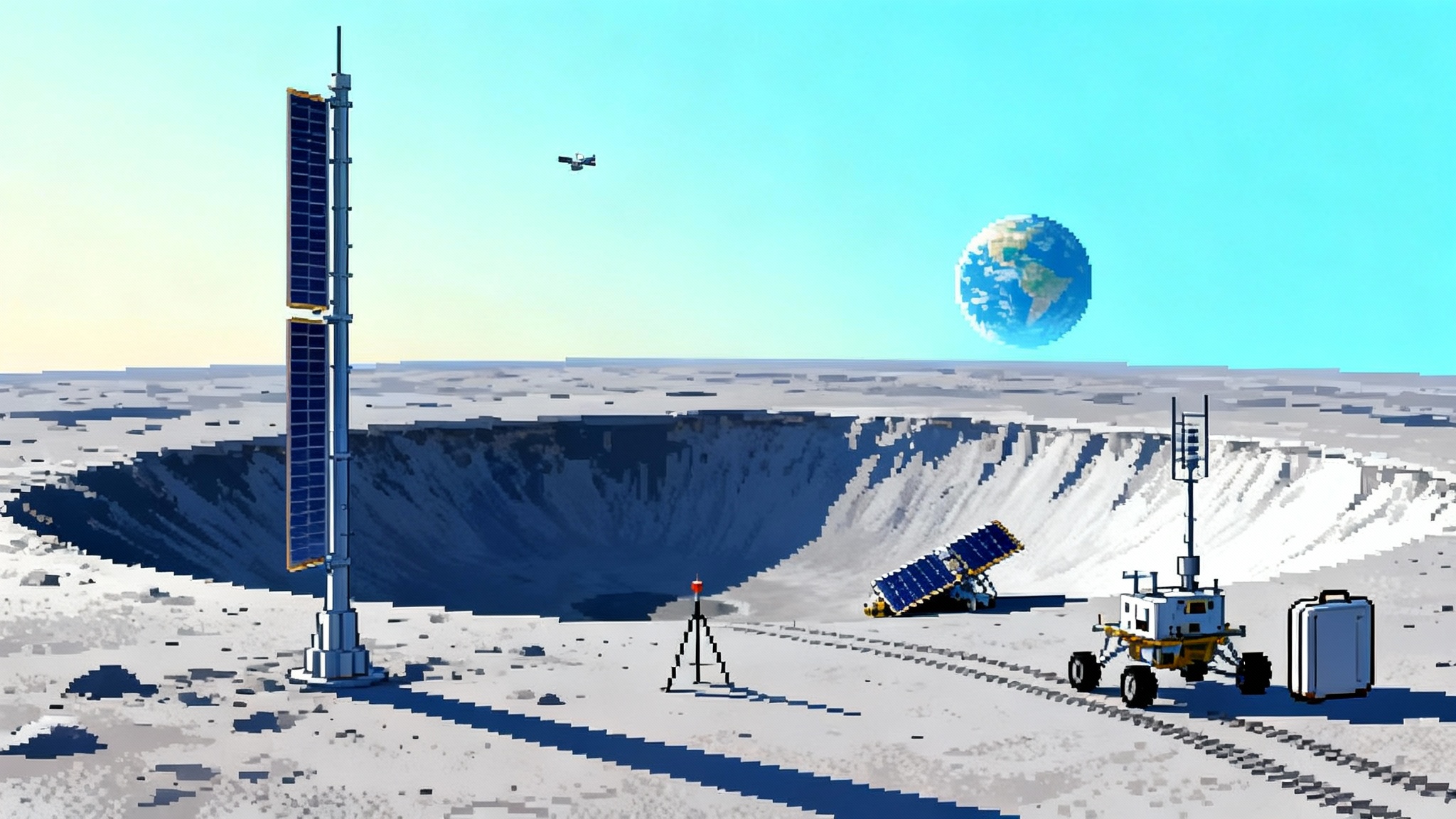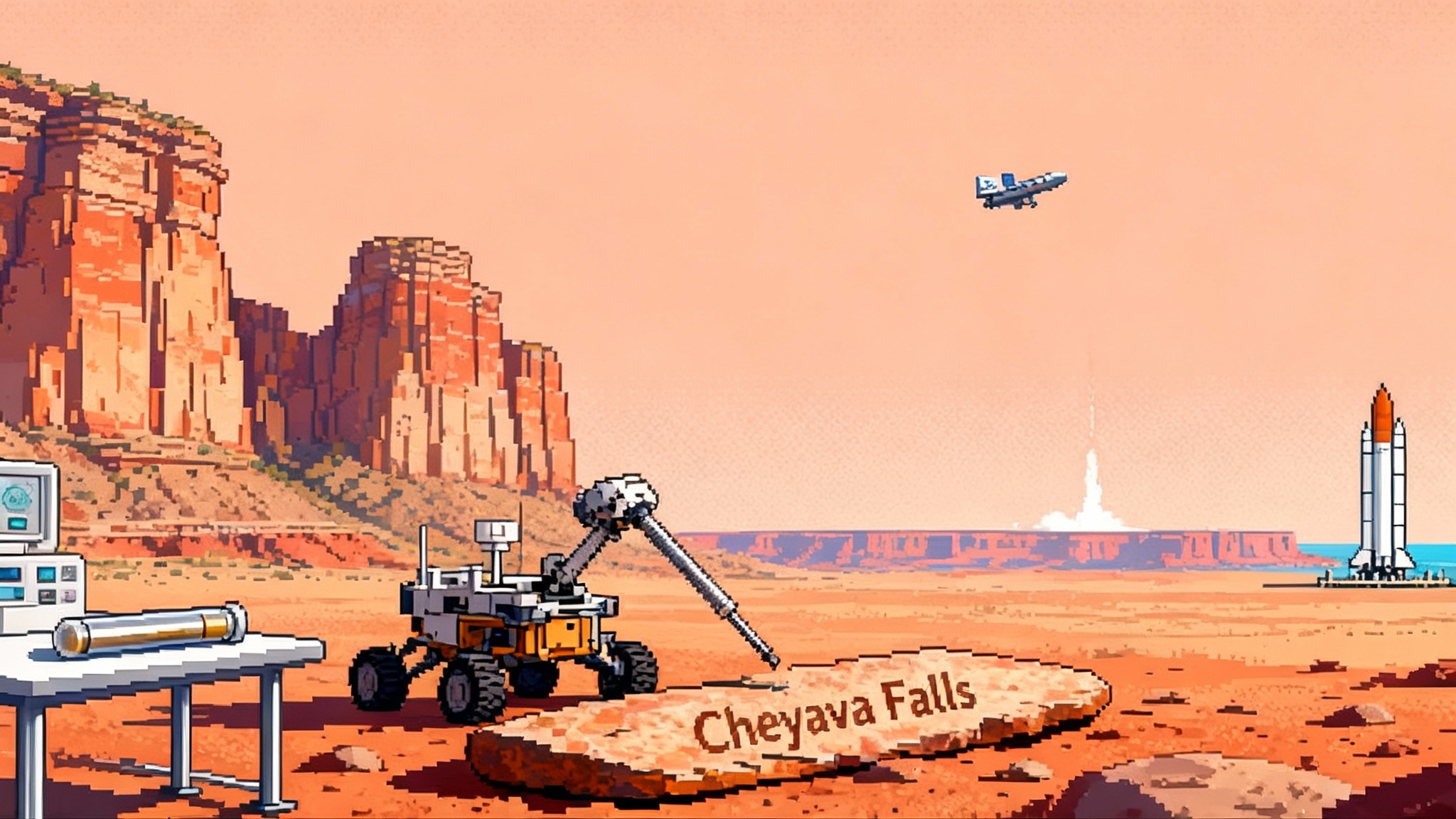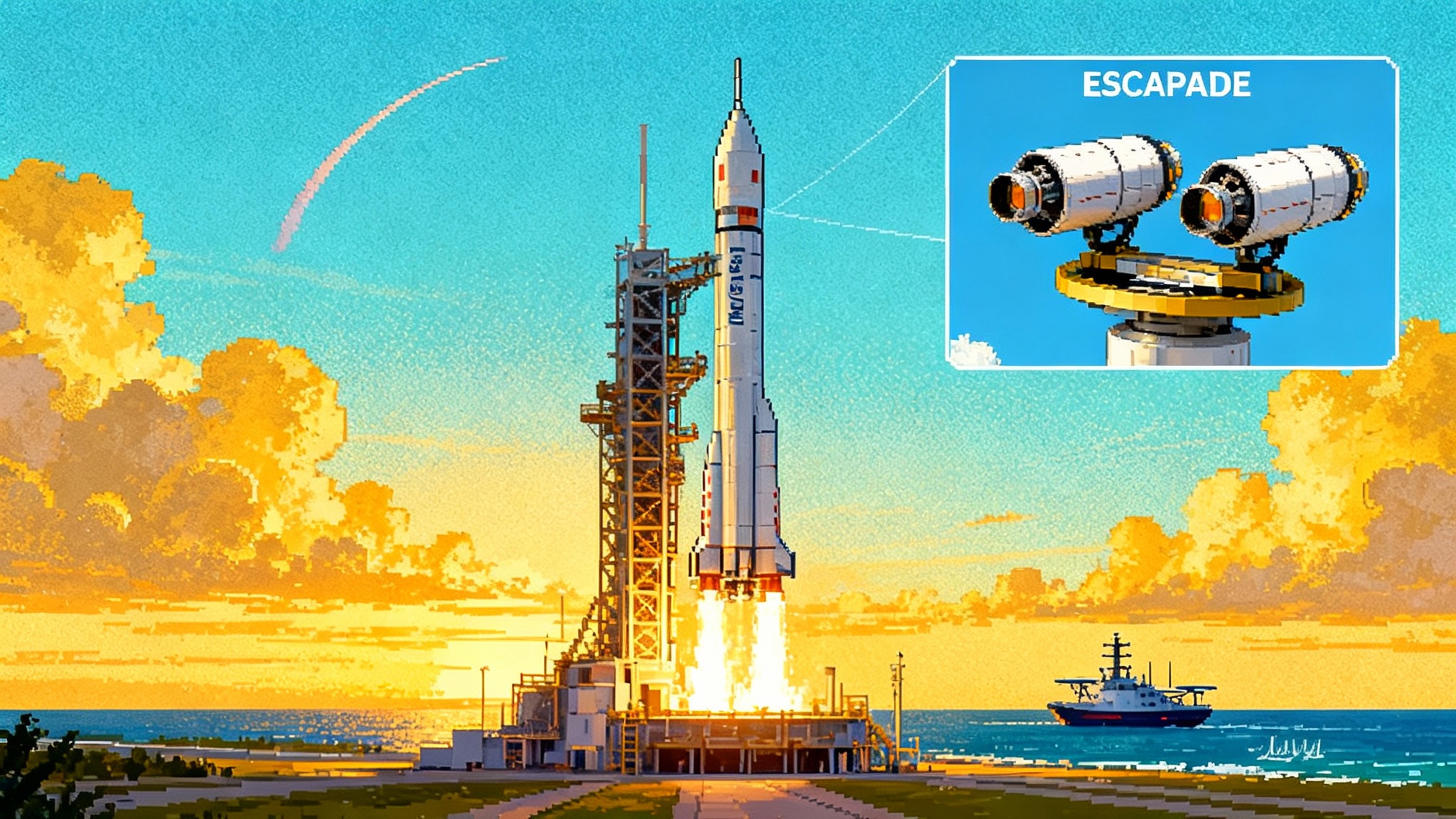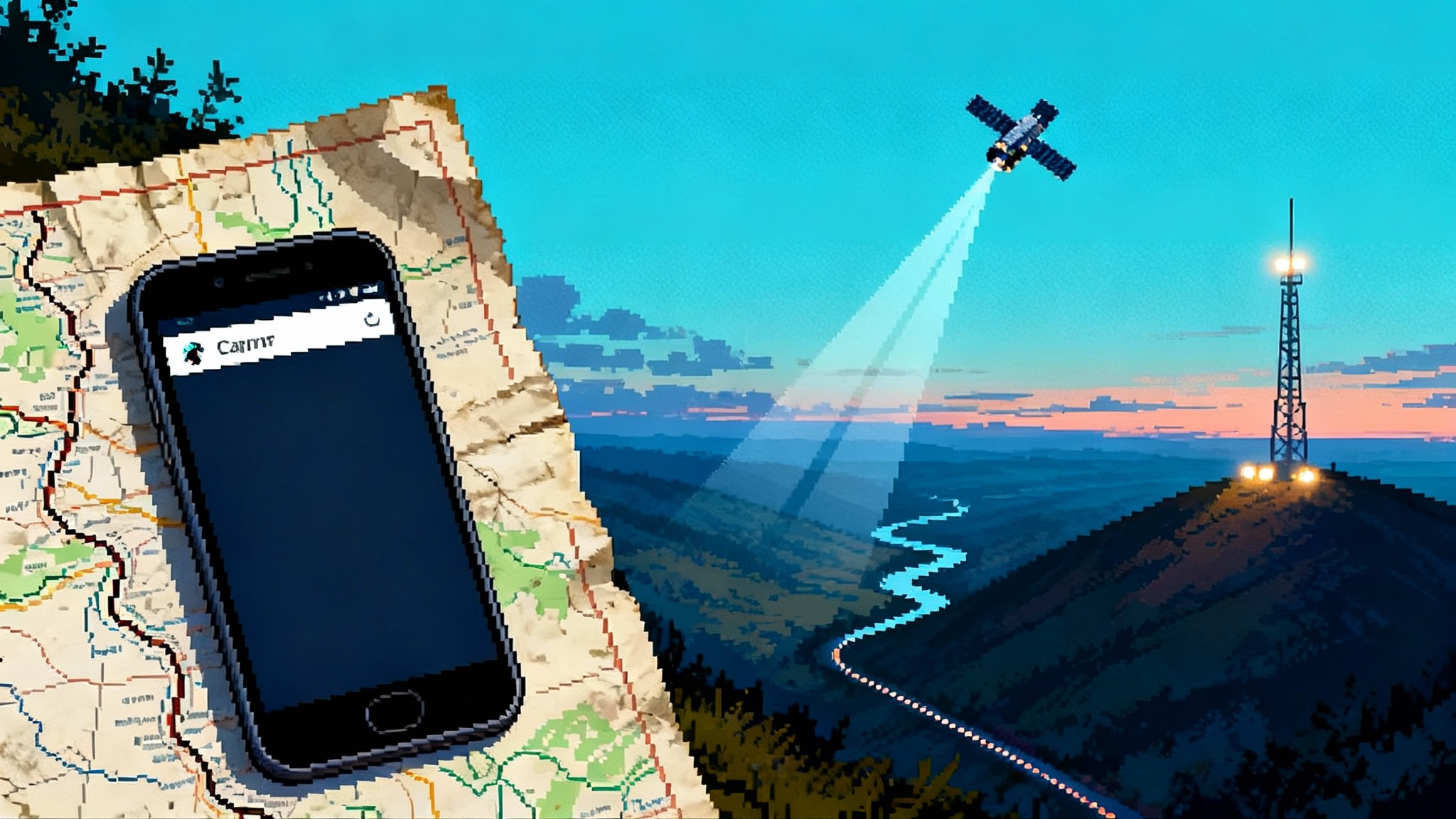What 2025’s Moon Landings Taught Us About the Lunar Poles
In March 2025, Firefly’s Blue Ghost stuck a clean touchdown at Mare Crisium, while Intuitive Machines’ IM-2 tipped over inside a south polar crater. What those back-to-back outcomes reveal about landing at the Moon’s edge.
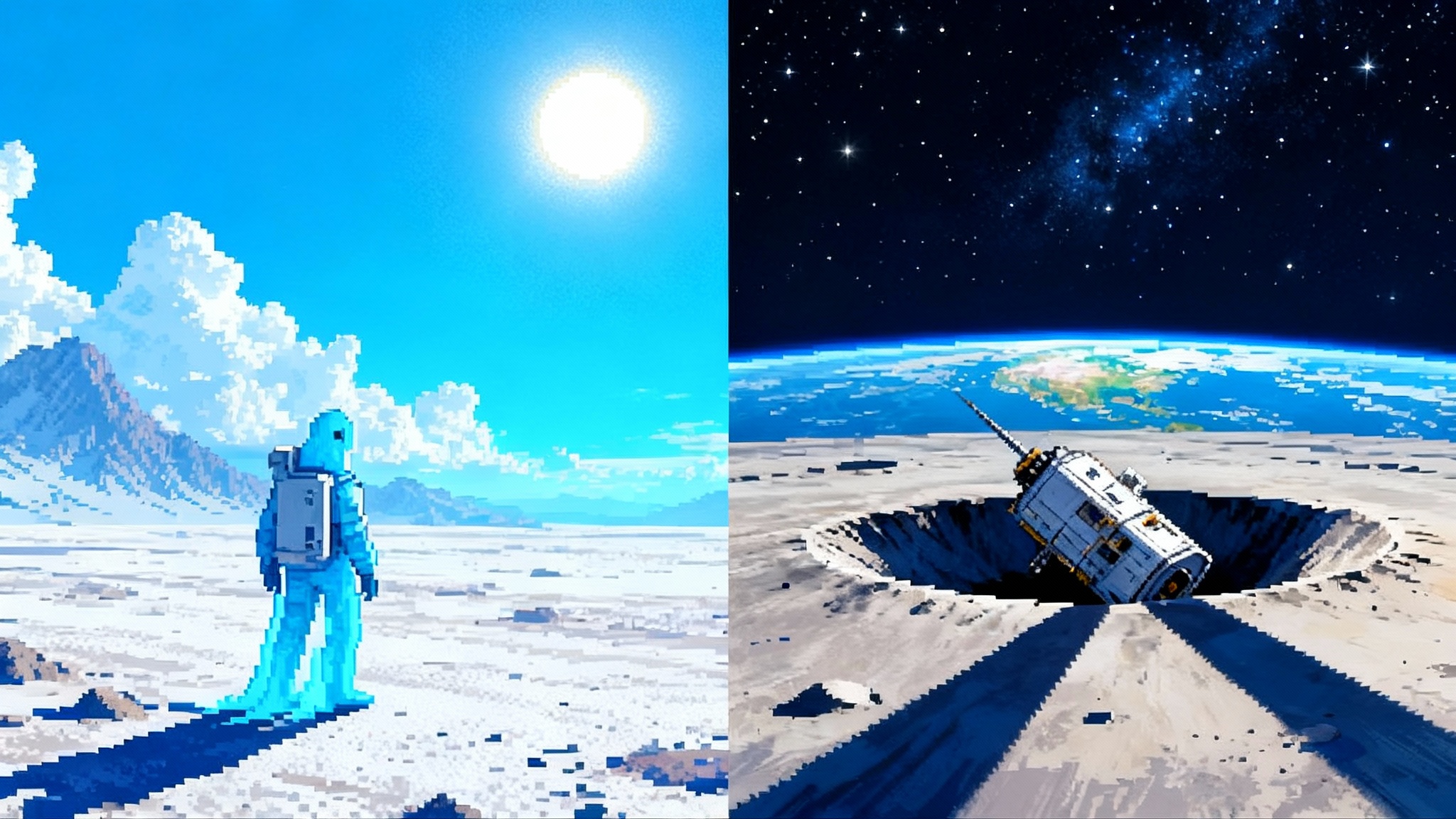
Two landings, two very different moons
On March 2, 2025, Firefly Aerospace’s Blue Ghost Mission 1 touched down near Mons Latreille in Mare Crisium, a broad, basaltic plain on the Moon’s near side. NASA confirmed the site and timing, and the lander delivered a suite of NASA instruments that operated through the two-week lunar day. Touchdown details and location.
Four days later, Intuitive Machines’ IM-2 lander, Athena, reached the south polar region. It came to rest roughly 250 meters from its target at Mons Mouton, inside a small crater, and ended up on its side. The company and NASA downlinked images and some early data before declaring an early end of mission on March 7. NASA’s post-landing summary captures the outcome.
Those two landings, days apart, look like a simple contrast of success and setback. They are better understood as a controlled experiment. Same destination, very different neighborhoods. Mid-latitude mare terrain rewards simple, conservative tactics. The south pole punishes them. Here is what the south pole taught us.
Why the poles are uniquely hard
Lunar poles combine tricky terrain, unforgiving light, and narrow operational margins. Each factor alone is manageable. Together, they turn a routine descent into a knife-edge.
- Terrain: The polar highlands are jumbled with craters of every size, ridges that rise in sharp relief, and slopes that change quickly over short distances. The mare where Blue Ghost landed is comparatively smooth, with basalt flows that have had billions of years to settle and weather into broad, low-slope plains. Hazards still exist, but they are easier to see and avoid.
- Lighting: At mid-latitudes the Sun climbs high and casts short shadows. At the poles the Sun skims the horizon, throwing shadows that stretch for hundreds of meters. Permanently shadowed regions, the cold traps inside crater floors, never see direct sunlight. Hazard cameras that work well at noon can be fooled by ridge lines at dawn angles. A safe patch can look dark, a small boulder can masquerade as a cliff.
- Operations: A lander in Mare Crisium can count on nearly 14 Earth days of light, steady temperatures for electronics by lunar standards, and clear lines of sight for Earth communications. A polar lander lives on the clock. Illumination windows can be short. Sunlight arrives at low angles that starve fixed panels. Slipping a few hundred meters can push you from a lit rim to a frigid crater interior.
The lighting problem, explained simply
Imagine trying to park a car at dusk on a rocky field using only a dash camera. The low Sun exaggerates the height of every pebble and hides holes in uniform darkness. Your depth perception goes soft. In the south polar region that is a constant condition. Hazard detection systems trained and tuned on test ranges with higher Sun angles can misclassify features. Optical navigation and terrain relative navigation rely on image contrast and feature tracking; both degrade when shadows dominate the scene.
That forces polar landers to lean more on active sensors. Doppler lidar and laser altimeters measure altitude and velocity directly, regardless of lighting, and can map a patch under the vehicle during the last seconds. The catch is time and fuel. A sensor suite may need extra seconds to build a confident hazard map. Every extra second in hover consumes propellant and reduces margin for a divert or a go-around. At the poles, where the safe spots can be narrow and scarce, margins are already thin.
Slope and stability are not academic
A lander’s stability after touchdown is set by simple geometry and not-so-simple soil physics. The tipping threshold depends on the height of the center of mass, the stance width of the legs, and the slope of the ground. A tall vehicle with a narrow stance has a smaller allowable slope. Even a gentle tilt can become a toppling moment if a footpad digs in or slides on glassy regolith.
Blue Ghost’s first photos showed an upright attitude on a relatively flat surface. That suggests a touchdown within the vehicle’s designed slope limits and footpads that engaged the soil as intended. IM-2’s side-on posture suggests the opposite. Whether the immediate cause was slope, a footpad landing on a rock at the edge of a small crater, or lateral motion at contact, the outcome shows how little slack there is at the poles. Inside a small crater the local slope can exceed a lander’s limits, and the low Sun can make that crater mouth look benign from above.
If you reduce the problem to first-order math, halving the center-of-mass height or increasing the leg stance by 20 percent can add several degrees to the allowable slope. That is the difference between staying upright on a crater shoulder and rolling into it. Design matters as much as guidance.
Dust and the last ten meters
Engine plumes lift dust, and dust blinds sensors. At mid-latitude mare sites the regolith is fine but consistent. At the poles you can find looser pockets and steeper local gradients that trap the plume under the vehicle, lofting more dust into hazard cameras and lidars exactly when they need clean readings. The low Sun angle compounds it by making the dust look like a dark veil.
One response is to push more of the hazard detection earlier in the descent while the engines are at lower throttle and the plume is less intense. Another is to fuse active sensing with inertial estimates so that a brief dropout does not generate a bad divert decision. Both require deeper software validation in polar lighting, not just polar terrain.
Power, thermal survival, and communications
Blue Ghost enjoyed a full lunar day of operations. Solar panels near the equator had a healthy Sun angle, radiators could purge heat to the sky, and communications to Earth were straightforward. The team even captured a lunar eclipse from the surface later in the mission, a nice proof that steady power and thermal control were in hand.
IM-2 faced the polar reality. Inside a crater the Sun barely rises, so fixed panels cannot recharge efficiently. Cold shadows make batteries sluggish. A tipped vehicle makes everything worse, since solar incidence, antenna pointing, and radiator orientation all go off nominal at once. The mission still returned some data and images, including proof that the PRIME-1 drill deployed, but the environment closed out the rest.
Guidance and navigation lessons, in plain language
- Redundancy for altitude and velocity: At least two independent altitude sources should agree within tight bounds through the last kilometer, and a third should provide a reality check for the final hundred meters. That can be a mix of terrain-relative navigation, laser or radar altimetry, and Doppler lidar. Agreement logic must be robust to shadowed terrain.
- Train the algorithms on polar light: Machine-vision hazard detectors need datasets that reproduce the poles’ long shadows, low-contrast depressions, and glints. Synthetic scenes help, but high-fidelity lunar imagery with polar lighting is better. The more the onboard system has seen the poles, the less surprised it will be.
- Plan for divert scarcity: At mid-latitudes you can usually slide a few hundred meters to a safer patch if the chosen site is marginal. At the poles that slide can put you from safe light to deep cold. Mission rules should treat divert distance as a power and thermal risk, not just a hazard-avoidance tool.
Lander hardware that suits the south pole
- Lower the center of mass: Place the heaviest tanks and batteries as low as possible. A squat vehicle forgives slopes the way a tall one does not.
- Wider, smarter legs: A slightly wider stance and articulating legs that can absorb lateral motion without skidding add margin. Footpads with edges that bite into hard regolith and a surface that spreads load in dust reduce sink and slip.
- Side-safe layouts: Assume a non-zero chance of tipping. Put at least one low-gain antenna, a sun-facing panel segment, and a radiator on a side that still works if the vehicle lies at 60 to 90 degrees. Package critical payloads so they can operate in a sideways posture.
- Multi-angle solar and thermal: Polar missions benefit from panels arranged to catch a grazing Sun and from thermal systems sized for short, very cold nights or extended shadow. Fixed, zenith-only arrays are a liability at the poles.
What it means for CLPS deliveries
Commercial Lunar Payload Services is doing exactly what it is supposed to do. The program is buying frequent, lower-cost deliveries and letting different architectures compete against the real Moon. Blue Ghost shows that a well-integrated, mid-latitude mission can deliver instruments, survive a full day, and close cleanly. IM-2 shows that the poles will break assumptions, both in software and structure.
For payload designers, the message is to polar-proof your hardware. Budget extra power for low Sun angles. Add heaters that can survive deep cold if the lander falls dark. Choose instruments that can return a minimum dataset quickly. PRIME-1’s drill deployment and early data, even from a compromised posture, is the right instinct. For future in-situ resource utilization packages, that means fast sampling cycles and sensors that can ingest and analyze regolith within hours, not days.
For CLPS providers, the path is clear. Prove stable landings where light is kind, then roll those lessons into polar designs with lower centers of gravity, wider legs, and sensor suites validated in polar light. Treat polar hazard detection and last-meter control as first-class systems, not adaptations of mid-latitude playbooks.
Prospecting for ice, the realistic near-term
Resource prospecting at the south pole is the long game. Remote sensing already maps likely volatile deposits, but ground truth is essential. PRIME-1’s goal was to drill to about a meter, bring material to the surface, and sniff for volatiles with a mass spectrometer. IM-2’s brief operations hint at how that will play out. At the poles, instruments should be ready to switch on immediately after landing, run autonomously, and handle odd vehicle attitudes. Future drills and scoops should be tolerant of slope and able to operate even if the lander is not perfectly level.
This is not a reason to avoid the poles. It is a reason to go back with equipment that expects the worst. Once a few teams demonstrate upright, power-positive landings on illuminated ridges near shadowed craters, prospecting can move from tech demo to mapping campaign.
The Artemis south pole timeline, translated
Artemis relies on two tracks that must converge. One is the government hardware, from Orion and SLS to next-generation suits. The other is commercial capability, including cargo deliveries that wring out risk in the south polar environment. NASA’s current planning points to an Artemis III landing in 2027. Between now and then, CLPS flights will keep pressing toward more capable polar operations. The lesson from March 2025 is that every polar attempt should be treated as a mission to de-risk the next one, not just a delivery.
Expect more mid-latitude runs to prove avionics and operations during long days. Expect focused polar testbeds that fly improved hazard detection, new leg designs, and power systems that thrive at low Sun angles. Expect payloads to arrive packaged for immediate first-light data, so that even short-lived missions add real knowledge.
A playbook for the next south polar shot
Here is a simple checklist that folds the month of March into a plan:
- Validate hazard detection in polar light with flight-like cameras and dust, not just simulations.
- Fly triple-redundant altitude and velocity sensing that keeps working through dust and shadow.
- Redesign landers with lower centers of mass and wider stances, and package critical systems to survive sideways.
- Target illuminated ridges with proven local lighting models, and treat divert distances as power hazards.
- Give prospecting instruments a fast start path, so they can return a minimum dataset within hours of landing.
The future south pole lander that looks boring will be the one that lives long enough to make history. It will be a little shorter, a little wider, and a lot more stubborn about power. It will waste less time deciding and more time doing. The Moon has already told us what it expects. March 2025 translated the message into plain terms. Now it is on us to listen, build, and try again.
